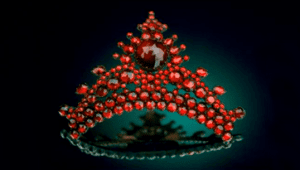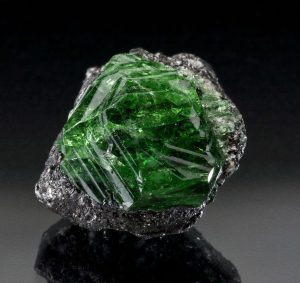Even though with January comes Epihany and its delicacies, the first month of the year is also known for its seasonal blues. Garnet’s reputation as a cure against depression therefore makes it a very relevant stone for the month.
ORIGINS OF THE NAME GARNET
The name of the garnet stone derives from the Latin granatus, which means pomegranate. With its vibrant red shade and jewel-like seeds, the connection is easy to see even though garnets actually come in a large palette of shades. In ancient times, garnet was known as “Carbuncle”, due to its color. This name was also applied to other red stones, but to the garnet in particular.
THE HISTORY OF GARNET

Remnants of garnet jewelry have been found dating as far back as the Bronze Age. Jewelry with garnet inlays and carvings were found in Egypt back to 3100 BC. The garnet gemstone was also very popular with the Romans in the third and fourth centuries. However, it is the Victorians who made garnets very popular in the 1800s. This was due to the discovery of a rich seam of them in Bohemia, now Czechoslovakia, where it is still mined. The Smithsonian’s antique pyrope hair comb is one of the most famous pieces of garnet jewelry and features garnets form these mines.
MAIN MINES OF GARNET
 Garnets come from many different regions and countries. As mentioned before, Bohemia was the primary source of the red pyrope garnets so popular during Victorian times.
Garnets come from many different regions and countries. As mentioned before, Bohemia was the primary source of the red pyrope garnets so popular during Victorian times.
Today, the African continent supplies much of the world’s garnet. Namibia is now producing demantoids. Most of the bright green tsavorites in the market come from Kenya, Tanzania and Madagascar. Namibia and Tanzania are also key sources of the rich orange-to-yellow spessartine garnets.
Garnet is actually a group of several minerals, including pyrope, almandine, spessartine, grossular and andradite as the main ones. Pyrope and almandine range from purple to red. Spessartine is found in bright oranges and yellows, while andradite is mostly yellow to green. Grossular may have the widest range, from colorless through yellow to reddish orange and orangy red, as well as a strong vibrant green called tsavorite.
The different types of garnet range between 6.5 and 7.5 on the Mohs scale of hardness. This means that this birthstone is more susceptible to damage than rubies, sapphires and diamonds.
SYMBOLISM OF GARNETS
Through time, garnets were at the center of many legends, from religious to mythological. According to legend, Noah used a finely cut, glowing garnet to illuminate the ark through dark, stormy night. Hebrew writers include the garnet as one of the twelve gems in Aaron’s breastplate. Christian tradition considered the blood-red garnet as a symbol of Christ’s sacrifice. The Koran holds that the garnet illuminates the Fourth Heaven of the Muslims.
During medieval times but also in Indian astrology, garnet is said to eliminate negative feelings such as depression. It instills greater self-confidence and mental clarity to promote creative thinking and peace of mind.
In Greek mythology, the story told that Hades had given a pomegranate to Persephone to return to him in the underworld every year. Therefore, Garnet may be given to a beloved before embarking on a trip, as it is believed to heal the broken bonds of lovers. By extension, garnets have been exchanged between parting friends to symbolize their affection and to ensure that they meet again.
Finally, garnet is the birthstone for January and the stone that celebrates the 2nd, 6th and 19th anniversary of marriage.
 en
en
 Français
Français






